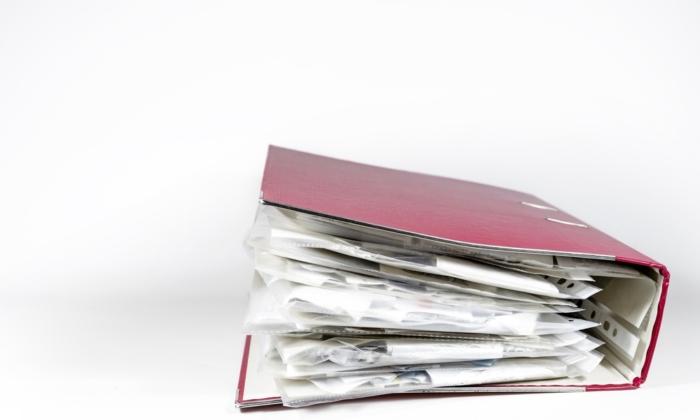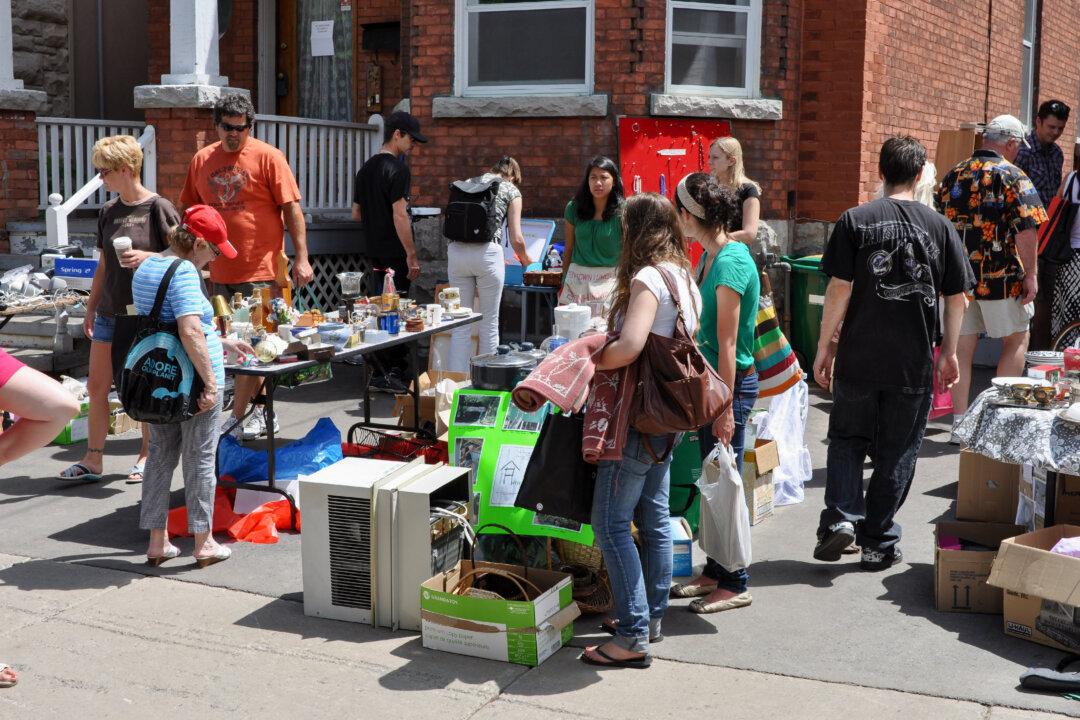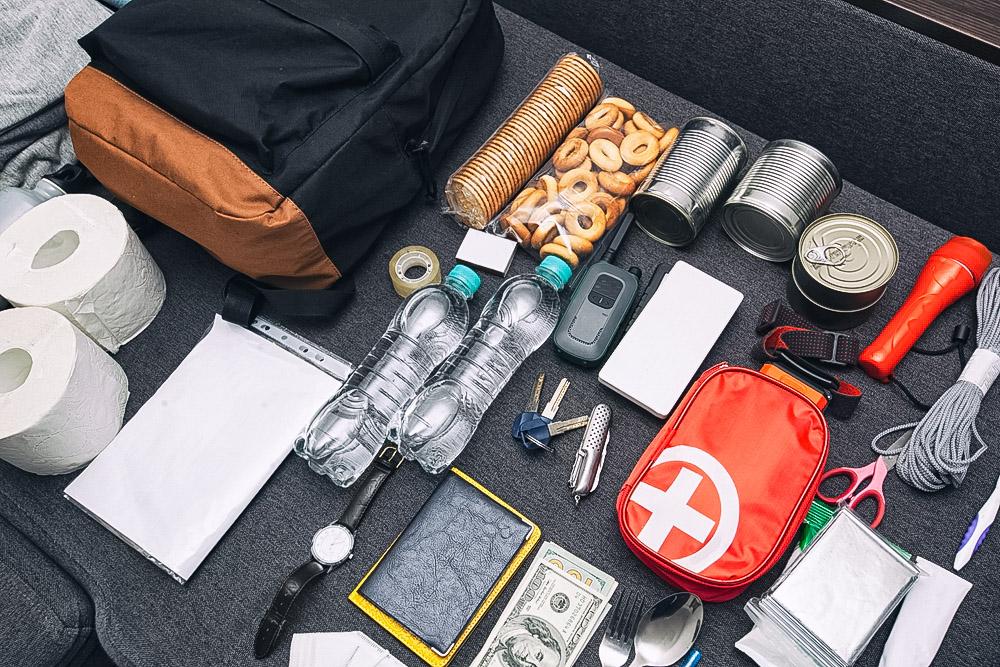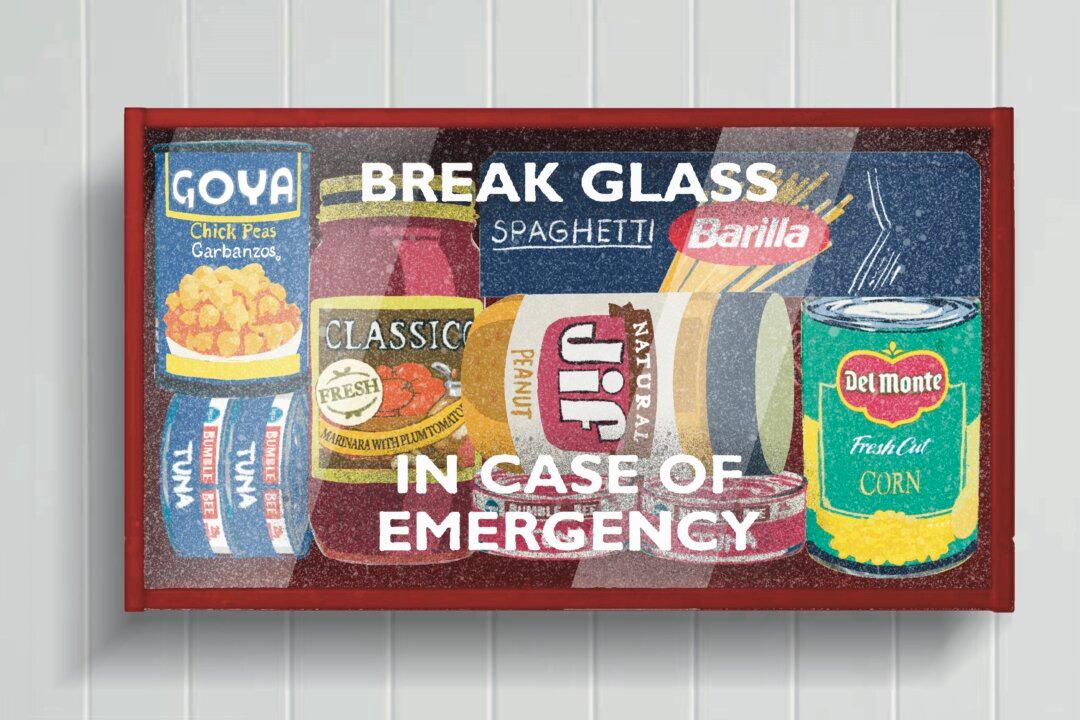When it comes to a worst-case scenario, your best friend will be your insurance agent or a reputable plumber or roofing contractor, not a bug-out bag or freeze-dried food. Right in the middle of Winter Storm Uri when the Texas power grid failed, a single weakened pipe in our attic burst, sending hundreds of gallons of water through our house. You can bet that the first phone call we made was to our insurance company.
In a scenario such as this one, however, when adrenaline is pumping and our brains can’t decide if we should flee, freeze, or fight, the last thing you’ll want to do is race through the house looking for insurance policies and things such as medical records, birth certificates, and bank statements.
Instead, take a few hours over the next couple of weeks and create a Grab-and-Go Binder that will contain all of your most vital documents. It will contain your most critical information for any emergency.
Unless you’re already extraordinarily organized, chances are your insurance documents and financial records are scattered around the house. Some may exist only as digital files, while paper copies could be in a filing cabinet or in a pile of unopened mail.
Here’s how to get started on that project.
Supplies You’ll Need
This project is simple and requires only a few supplies other than the documents themselves.You’ll need a three-ring binder; the 2-inch size will likely provide plenty of room without being too bulky. Then, you’ll need a supply of plastic page protectors, and binder dividers will help keep your documents organized. Pocket dividers can hold small things such as membership cards, receipts, and photos, and a three-ring plastic pouch can hold pens, a USB flash drive, and other small, relevant items.
Back-to-school season is ideal for buying these supplies at a discount.
Get Started on the Project
The most time-consuming part of this project is assembling all of your documents. Begin by reviewing these checklists and tracking down the lowest-hanging fruit—anything that you can get your hands on right away.To keep everything organized, I use these categories and create a labeled divider for each one.
- Financial records
- Personal/family records
- Husband
- Me
- Child No. 1
- Child No. 2
- Animals/pets
- Medical records
- Household records
- Legal records
- Evacuation plans
- Important contacts
- Notes
Use these checklists to get started. Since your binder is unique, not all of these will be relevant, and you’ll likely think of other important documents and files to add.
Financial Records
- Copies of the front and back of each debit and credit card
- Copies of investment documents and retirement accounts
- A list of all financial institutions you do business with
- Copy of rental or lease agreements
- Copies of all insurance policies (home, renters, auto, health, etc.)
- List of insurance companies/agents and their contact information
- Copy of your will and/or living trust
- List of all monthly bills, account numbers, and due dates
- Copies of loan documents
Personal/Family Records
Use a divider labeled with each family member’s name for things such as medical records, copies of birth certificates, etc.- Copies of marriage license, divorce decree, birth certificates, driver’s licenses, passports
- Copies of Social Security cards (You can request a replacement at ssa.gov)
- Adoption or custody papers
- Recent photos of each family member and pet
- Copies of diplomas and academic transcripts
- Resumes
- Copies of professional licenses
- Military service records, including DD-214
- Funeral arrangements
Animals/Pets
- Names and contact information of veterinarians
- List of medications and dosages
- List of allergies and known medical conditions
- Vaccine records
- List of pet-friendly hotels in case of an evacuation
Medical Records
These can be filed in a separate category or within Personal/Family Records, and it may be easier to, again, have one divider for each family member.- Immunization records
- Copy of health insurance cards
- Names and contact information for each doctor you see
- Current list of all prescription drugs, dosages, and pharmacy information
- List of each family member’s blood type and past surgeries
- Copies of any important medical records
- Medical living trust
- Medical power of attorney
- List of allergies
Household Records
- List of trusted home maintenance and repair companies
- Copies of property deeds and car titles
- Insurance company contact information
- Color photos of each room of the house
- Home inventory of each room in the house
- Appraisals of all valuables
- Photos of anything with particular value
- Documentation of major household improvements
- Inventory of safe deposit boxes and/or safes
Legal Records
- Last Will and Testament
- Copy of family trust or living trust
- Divorce papers
- Immigration papers
- Adoption or custody papers
- Names and contact information for attorneys
- Copies of any past or current binding contracts
- Power of Attorney documents
Evacuation/Emergency Plans
- A list of evacuation routes
- Paper map with routes marked
- List of delegated tasks per family member
- A list of hotels, especially pet-friendly ones if you’ll have animals with you
- Copy of a phone tree chart
Important Contacts
In the aftermath of any emergency, you’ll probably need to be in touch with numerous people and companies. This section will be where all contact information is compiled. Include names of businesses, names of individuals, website addresses, physical addresses, phone numbers, and email addresses.- Family members
- Neighbors
- Employers
- Church/place of worship
- Charitable organizations for help with meals, lodging, etc.
- Local emergency contacts, including police and fire departments
- Business contacts
- Medical professionals and hospitals
- Contact information for all binder categories
Keep several sheets of paper here for note-taking and reminders.
What About the Originals?
With all of these documents, you may wonder if you should include the originals in your binder or make copies. Legal documents, in particular, should be stored in a bank safe deposit box or a fireproof safe, along with any originals that would be difficult or impossible to replace.A major bank in my town was flooded in 2017, and access to safe deposit boxes was delayed for many months. In some cases, items were damaged beyond repair or simply missing, so carefully read the safe deposit lease agreement.
A bank safe deposit box is one of the safest storage locations, however. Along with copies or originals of your vital documents, you might add a video recording of your home, its contents, your vehicles, and other property for insurance and identification purposes.
In case you’re incapacitated or otherwise unable to access the safe deposit bank, be sure that at least one other person has access.
A Digital Backup
As secure as a bank safe deposit box might be, it isn’t 100 percent immune from potential risks or unforeseen circumstances. Banks can be swept away by a flood or tornado as is the case with any other building.A hard copy of your documents comes in handy when you must provide a paper copy of something such as an advance health care directive, but digital copies can be invaluable.
As your Grab-and-Go Binder comes together, scan each document. A small, lightweight scanner (such as Epson’s WorkForce ES-50 Portable Document Scanner) makes this simple, and you can send the scans immediately to the file of your choice.
Recreate the Grab-and-Go Binder on your desktop as a main folder with a subfolder for each document category, and use the same categories as in your physical binder.
Once everything has been scanned and saved in its proper folder, the next step is to copy that folder to a flash drive and/or to a cloud storage option such as Google Drive. As an extra backup, send an email to yourself and perhaps a close friend or family member with the Grab-and-Go Binder file as an attachment. This will allow you to access the contents of that folder from anywhere.
For added security, protect this folder with a password or encrypt the drive using something such as TrueCrypt.
Keep Your Binder Up to Date
Many of your documents are timeless, such as in the case of birth certificates and military discharge papers. However, over time, other documents will need to be updated.Make a master checklist of everything in your binder, and review it every quarter to see what might need updating. It takes a few minutes to scan a few sheets of paper, save them to your computer, and then add the hard copies to your binder.
The time you invest in assembling your Grab-and-Go Binder will pay dividends when an emergency strikes. Having all that information in one place is so much easier than scrambling to retrieve important family records in a time of crisis.





